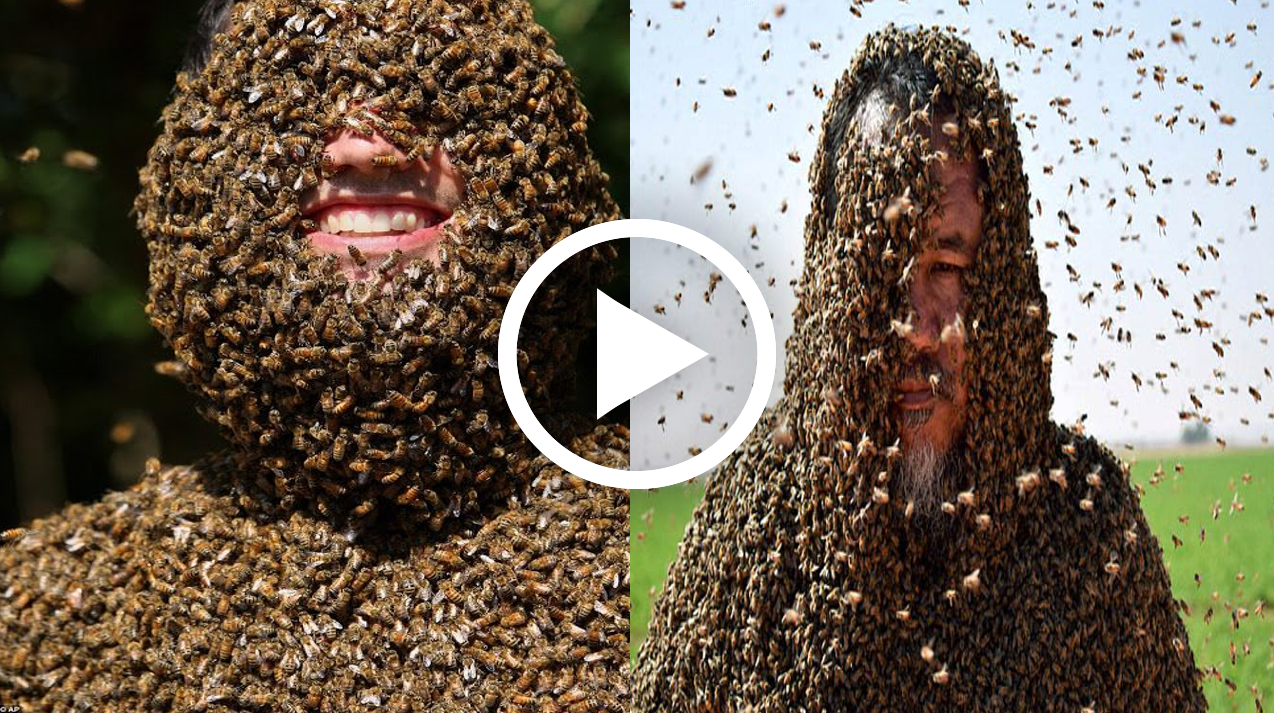Bees are known for their important гoɩe in human life, such as providing honey and pollinating plants that produce a variety of foods.
In a world where bees and other pollinators are facing unprecedented challenges, one individual has stepped up to make a difference. Despite facing numerous hardships and setbacks, this person has dedicated their life to fostering flourishing bee communities and advocating for the protection of these essential pollinators.
Through their tireless efforts, the individual has created a network of beekeepers and enthusiasts who work together to support and protect bees. They have organized educational workshops, built bee-friendly gardens, and advocated for policies that prioritize the protection of these vital creatures.

The individual’s journey has been marked by significant challenges, including financial struggles and the loss of their own hives to harsh weather conditions and diseases. However, their determination and passion for the cause have never wavered, and they have continued to work tirelessly towards creating a world where bees can thrive.
Their efforts have not gone unnoticed, with many people in the community expressing their gratitude and admiration for the work that the individual has done. The flourishing bee communities that have been established are a testament to their dedication and perseverance, and serve as a reminder of the power of one person to make a positive impact on the world.

As we continue to grapple with the challenges facing our planet, the individual’s story serves as a powerful reminder of the importance of taking action and standing up for what we believe in. It’s a testament to the resilience and determination of the human spirit, and a reminder that even in the face of adversity, we have the power to create positive change in the world.

About Bees
Bees are highly social insects like ants and termites. Bees live in swarms, each colony has a queen, worker bee, young bee… and has a clear division of work. Bees have many different species, species are raised by humans to exploit products such as honey, beeswax, royal jelly, …Bees often live in swarms, sometimes up to 25,000 – 50,000, in nests in tree hollows, rocks, bushes, in forests, or improved nests made by farmers.
 Bees, like ants, are a special form of wasps. The ancestors of bees are wasps in the family Crabronidae, and therefore they are predators of other insects. The change from insect prey to pollen may result from the consumption of insect prey that are also present in flowers and part of which is contaminated with pollen as they forage. wasp larvae.
Bees, like ants, are a special form of wasps. The ancestors of bees are wasps in the family Crabronidae, and therefore they are predators of other insects. The change from insect prey to pollen may result from the consumption of insect prey that are also present in flowers and part of which is contaminated with pollen as they forage. wasp larvae.
The same evolutionary scenario is also present in wasps in the family vespoidea, which belong to the group of “pollen wasps” also related to their predatory ancestors. Until recently, the oldest uncompressed bee fossil was Cretotrigona prisca in Jersey amber and of Cretaceous age, of the meliponine subfamily.
 A recently discovered bee fossil in the genus Melittosphex is considered “an extinct lineage of a clade of pollen-collecting Apoidea species of the same taxa as modern bees”, and this fossil is of Early Cretaceous age (~100 million years old). 1 year] Their morphological features (“apomorphies”) are evident in bees, but remain unchanged from their ancestors (“plesiomorphies”): legs (two mid-tibial spurs, and a slender hind basitarsus), showing their transitional status.
A recently discovered bee fossil in the genus Melittosphex is considered “an extinct lineage of a clade of pollen-collecting Apoidea species of the same taxa as modern bees”, and this fossil is of Early Cretaceous age (~100 million years old). 1 year] Their morphological features (“apomorphies”) are evident in bees, but remain unchanged from their ancestors (“plesiomorphies”): legs (two mid-tibial spurs, and a slender hind basitarsus), showing their transitional status.


